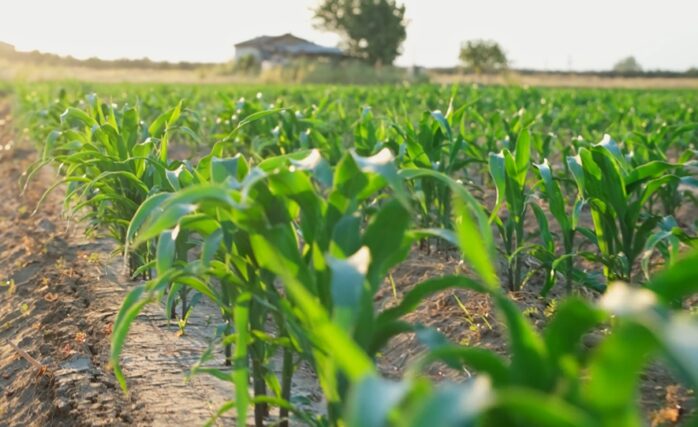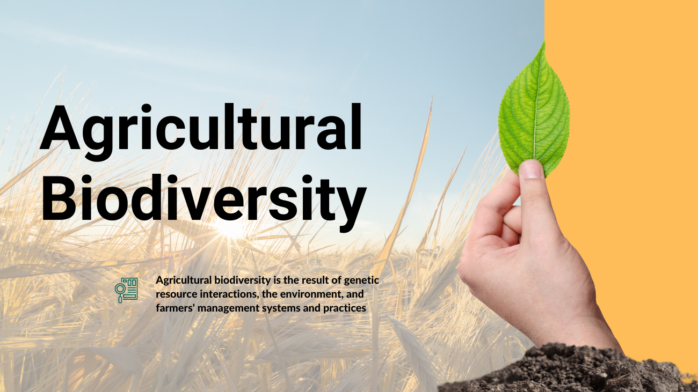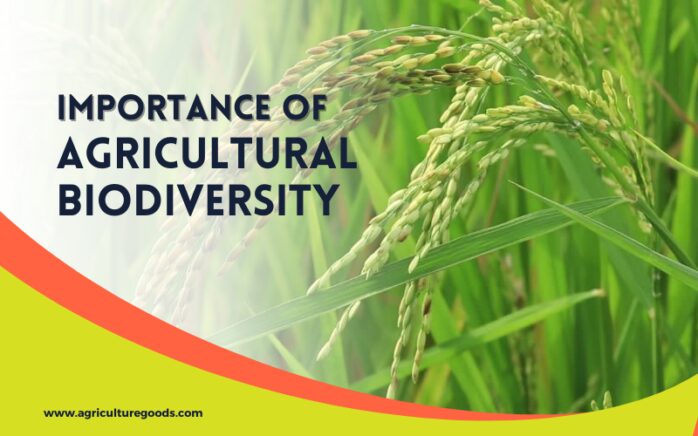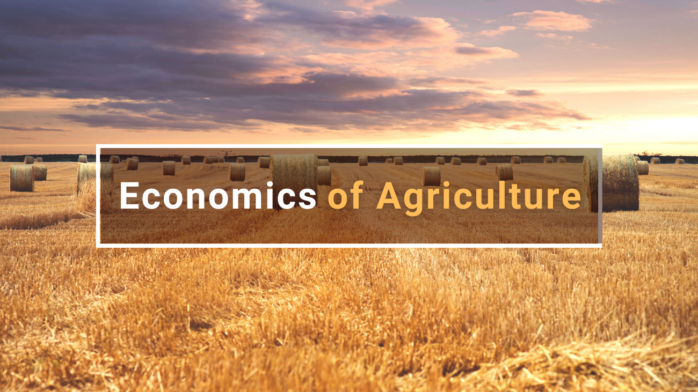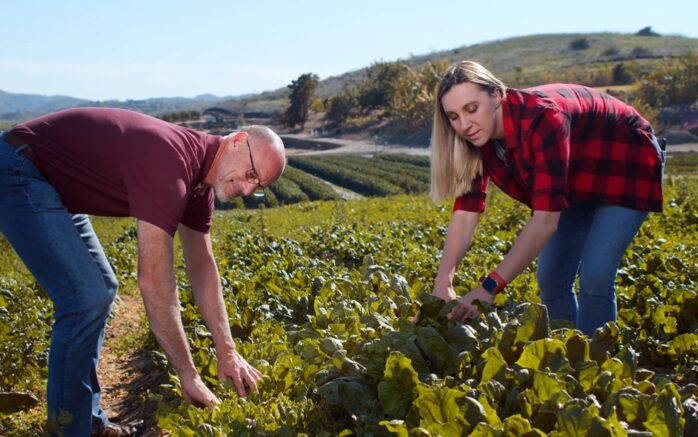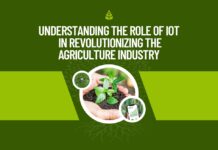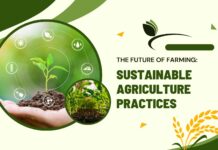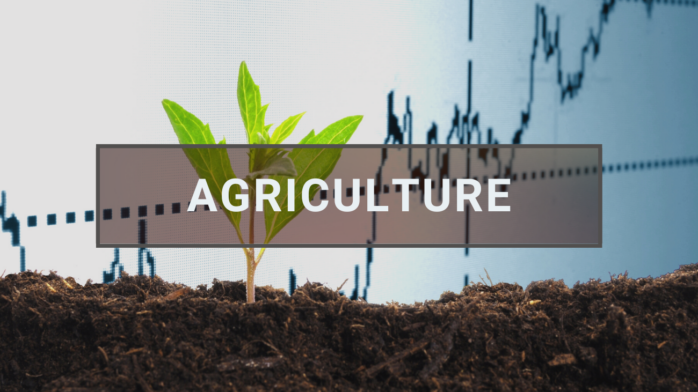
For decades, agriculture has been associated with the production of essential food crops. At present, agriculture above and beyond farming includes forestry, dairy, fruit cultivation, poultry, beekeeping, mushroom, arbitrary, etc.
Today, processing, marketing, and distribution of crops and livestock products, etc. Are all acknowledged as part of current agriculture? Thus, agriculture could be referred to as the production, processing, promotion, and distribution of agricultural products.
Agriculture plays a critical role in the entire life of a given economy. Agriculture is the backbone of the economic system of a given country. In addition to providing food and raw material, agriculture also provides employment opportunities to a very large percentage of the population.
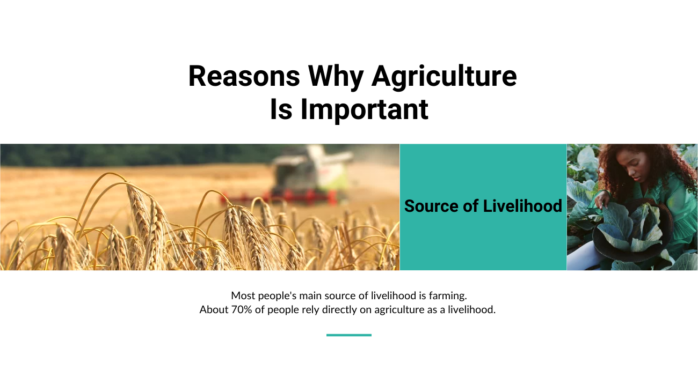
Below are the factors why agriculture is important:
Source of Livelihood
Most people’s main source of livelihood is farming. About 70% of people rely directly on agriculture as a livelihood. The result of the non-development of non-agricultural activities to absorb the fast-growing population is this high percentage in agriculture. Furthermore, many people are not engaged in agriculture in developed countries.
Contribution to National revenue
Agriculture is the main source of national income for most developing countries. However, for developed countries, agriculture contributes a smaller percentage to their national income.
Supply of Food as well as Fodder
The agricultural sector provides fodder for domestic animals. The cow provides people with milk which is a form of protective food. Moreover, livestock also meets people’s food requirements.
Significance to the International Trade
Agricultural products like sugar, tea, rice, spices, tobacco, coffee, etc. constitute the major items of exports of countries that rely on agriculture. If there is a smooth development practice of agriculture, imports are reduced while export increases considerably.
This helps to reduce countries’ unfavorable balance of payments as well as save foreign exchange. This amount may be well used to import other essential inputs, machinery, raw material, and other infrastructure that is helpful for the support of the country’s economic development.
Marketable Surplus
The growth of the agricultural sector contributes to a marketable surplus. Many people engage in manufacturing, mining, as well as other non-agricultural sector as the nation develops.
All these individuals rely on food production that they might meet from the nation’s marketable surplus. As agricultural sector development takes place, production increases and this leads to the expansion of marketable surplus. This may be exported to other nations.
Source of Raw Material
The main source of raw materials to major industries such as cotton and jute fabric, sugar, tobacco, edible as well as non-edible oils is agriculture.
Moreover, many other industries such as the processing of fruits as well as vegetables and rice husking get their raw material mainly from agriculture.
Significance in Transport
The bulk of agricultural products is transported by railways and roadways from farms to factories. Mostly, internal trade is in agricultural products. Moreover, the revenue of the government, to a larger extent, relies on the success of the agricultural sector.
Foreign Exchange Resources
The nation’s export trade depends largely on the agricultural sector. For example, agricultural commodities such as jute, tobacco, spices, oilseeds, raw cotton, tea as well as coffee accounts for approximately 18% of the entire value of exports of a country.
This demonstrates that agricultural products also continue to be an important source of earnings for a country’s foreign exchange.
Great Employment Opportunities
Construction of irrigation schemes, and drainage systems as well as other such activities in the agricultural sector is important as it provides larger employment opportunities.
The agriculture sector provides more employment opportunities for the labor force. This, in turn, reduces the high rate of unemployment in developing countries caused by the fast-growing population.
Economic Development
Since agriculture employs many people, it contributes to economic development. As a result, the national income level, as well as people’s standard of living, is improved.
The fast rate of development in the agriculture sector offers a progressive outlook as well as increased motivation for development.
Hence, it aids to create a good atmosphere for the overall economic development of a country. Therefore, economic development relies on the agricultural growth rate.
Source of Saving
Development in agriculture may also increase savings. The rich farmers we see today started saving particularly after the green revolution. This surplus quantity may be invested further in the agriculture sector to develop the sector.
Food Security
A stable agricultural sector ensures a nation of food security. The main requirement of any country is food security.
Food security prevents malnourishment which has traditionally been believed to be one of the major problems faced by developing countries. Most countries rely on agricultural products as well as associated industries for their main source of income.
Agriculture Important and its Role in Everyday Life
In most parts of the world, agriculture is an important source of livelihood. This entails hard work, but it contributes to the nation’s food safety and health. Agriculture was the primary source of the economy prior to the industrial revolution.
With many trade options coming up, many are dependent on their income on agriculture. Agriculture is the most peaceful and environmentally friendly method.
It is a very reliable source of life for humanity, as well as one of the honest sources of income. Many people from developing countries rely for their livelihood on agriculture. Some people still have agriculture as a side business in other businesses or jobs.
Agriculture is not limited to cultivation and farming alone. It also includes dairy, poultry, forestry, beekeeping, and sericulture.
If you want to start your own farm today, you can contact experts at MossyOakProperties.com to guide you in finding the best farmland. They have a lot of properties all over the U.S so it’s perfect for people who want to start their own farmland anywhere in the U.S.
Importance of agriculture in the Food Supply
Agriculture is the world’s leading source of food items. All the food substances that are essential viz. Agriculture produces vegetables, proteins, and oils.
Carbohydrates provide all living beings with energy. These are produced in the form of grains that grow in farms such as rice, wheat, and potatoes.
It’s helpful to build our bodies with proteins. They are distributed by agriculture as grams and other leguminous goods. Such commodities include beans, pulses such as black gram,
Bengal gram, green gram, etc. Other protein sources such as beef, fish, and dairy are also dependent on farming. Protein from vegetarian sources is cheap and healthy without the risk of disease. People, therefore, rely on protein from agriculture for their daily needs.
It is essential to supply energy, body structure, and heat with fats and oils. These can be obtained by growing sunflowers, groundnut, mustard, sesame, etc. from agriculture.
Fruits: fruits have organic and intact food content because they don’t need to cook. Children, the elderly, and sick people make them digestible. Grapefruits are also used to make wine.
Flowers are used for decoration, for the purposes of ceremonies. They are also a rich source of fragrance, coloring material.
Search for Agriculture Books on Amazon.comAmazon.comAmazon.comAmazon.com
Importance of agriculture for medicine
Enzymes: Papain enzyme is obtained from the fruit of papaya. This papain is used as an enzyme that is organic. It is used as a substitute for indigestion for one of the digestive enzymes. Especially useful for the elderly and sick. This papain is obtained by the cultivation of papaya on a large scale.
Also, See How to Grow Papaya tree in Greenhouse for Profits
Laxatives: Cultivation of Espagnol used for moderate constipation treatment
Alkaloids: Like a drug, most alkaloids are used. Opium alkaloids such as morphine relieve severe pain, cough, and loss of movement as well. These are obtained in farms through the growth of opium poppy plants. Likewise, farming obtains alkaloids such as hyoscine, ephedrine, and physostigmine.
Glycosides: These are some important principles of medicine. Examples include heart failure cardiac glycosides such as digitalis. Senna is a glycoside used in constipation treatment. Steroidal glycosides for the production of steroid drugs in the heart.
Also, See Future of Agriculture in India, Jobs, and Opportunities
What is Agricultural Biodiversity?
Agricultural biodiversity is a broad term that includes all components of biological diversity related to food and agriculture, and all components of biological diversity that make up agricultural ecosystems, also known as agroecosystems: the variety and variation of animals, plants, and micro-organisms at the genetic, species and ecosystem levels needed to sustain key habitats.
Agricultural biodiversity is the result of genetic resource interactions, the environment, and farmers’ management systems and practices. This is the product of the millennia-long development of both natural selection and human inventiveness.
It is possible to identify the following aspects of agricultural biodiversity:
- Genetic resources for food and agriculture:
Plant genetic capital, including crops, wild plants harvested and maintained for food, farm trees, pastures, and species of rangeland, Microbial, and fungal genetic resources.
Animal genetic resources, including domesticated animals, food hunted wild animals, wild and farmed fish, and other aquatic organisms.
These are the main production units in agriculture, including cultivated and domesticated species, managed wild plants and animals, as well as cultivated and domesticated species ‘ wild relatives.
2. Biodiversity components that support ecosystem services that are based on agriculture. These include a number of species that contribute to nutrient cycling, pest and disease management, pollination, pollution and sediment regulation, hydrological cycle conservation, erosion control, and climate regulation and carbon sequestration at various scales.
3. Abiotic factors such as local climatic and chemical factors and ecosystem physical structure and functioning have a determining effect on the biodiversity of agriculture.
4. Dimensions of socio-economics and culture. Human activities and management practices form and preserve agricultural biodiversity, and a large number of people depend on agricultural biodiversity for sustainable livelihoods.
Such dimensions include traditional and local awareness of agricultural biodiversity, participatory processes, and cultural factors, as well as tourism associated with agricultural landscapes.
Why Biodiversity is Important?
Agriculture is based on biodiversity. It has facilitated the development of farming systems since the first development of agriculture some 10,000 years ago. Biodiversity is the root and variation within all plant and domesticated animal species.
It is also the base of important ecosystem services for maintaining agriculture and the well-being of people. The biodiversity of today’s crops and livestock is the result of thousands of years of human intervention.
Biodiversity and agriculture are strongly interrelated, as while biodiversity is essential to agriculture, agriculture can also contribute to biodiversity conservation and sustainable use.
Yes, both encourage and improve sustainable agriculture through biodiversity. Maintaining this biodiversity is essential for the sustainable production of food and other agricultural products and their benefits to humanity, including food security, nutrition, and livelihoods.
Importance of Agricultural Biodiversity
Agricultural biodiversity provides people with food and raw materials for products, such as clothing cotton, shelter, and fuelwood, medicinal plants and roots, and biofuel resources, as well as employment and livelihoods, including those derived from subsistence agriculture.
Therefore, agricultural biodiversity performs ecosystem services such as soil and water preservation, soil fertility and biota protection, and pollination, all of which are necessary for human survival.
In addition, agricultural biodiversity genetic diversity provides organisms with the ability to adapt and evolve to changing environments by increasing their tolerance to frost, high temperature, drought, and water-logging, as well as their sensitivity to specific diseases, insects, and parasites, for instance.
This is particularly important when it comes to climate change. Biodiversity’s evolution, and hence both its and our existence, depends primarily on this genetic diversity.
Agricultural biodiversity’s significance includes socio-cultural, economic, and environmental components. All domesticated plants and animals are the result of human biodiversity management, which is continuously adapting to new challenges under constantly varying conditions to sustain and increase productivity.
Also, See Top 10 Fertilizer for Indoor Plants
The Economics of Agriculture
Agriculture is an essential part of the economy, responsible for producing food and goods that are used by humans and other animals. The sector employs about one in seven workers in the United States and contributes nearly $1 trillion to the nation’s gross domestic product (GDP).
Food production has a significant impact on both the economy and society. Agricultural products provide essential nutrients to people and help to sustain economic growth. Additionally, it helps create jobs and support communities across the country.
The economics of agriculture can be complex, but the basics are straightforward. The inputs required for agriculturally productive land – such as seeds, chemicals, fuel, and labor – are purchased by farmers from suppliers.
Outputs generated by farming – such as crops, meat, milk, eggs, fiber products, or forestry products – are sold to buyers who use them to produce other goods or services. Pricing mechanisms ensure that producers receive a fair return for their inputs while ensuring that buyers can afford the goods and services produced by farmers.
The physical environment is also important in understanding how agriculture affects the economy. Agricultural production requires land and water resources that may be unavailable if those resources are not managed properly. Pollution from agriculturally produced waste also has an impact on both the environment and public health.
The Role of Agriculture in the Economy
The role of agriculture in the economy has changed dramatically over the years. In the early days of capitalism, agriculture was essential to the development of economies because it provided food for workers and farmers.
Today, however, it is no longer solely focused on providing sustenance for people. Agriculture has become an important part of the global economy because it provides products that are necessary for other sectors of the economy to function properly.
For example, agriculture produces crops that are used to make products such as clothing and paper products. These products are then sold in markets and help contribute to GDP growth. Additionally, agricultural production helps create jobs in industries such as manufacturing and transportation.
Given its importance to the global economy, policymakers have taken notice of what happens when agriculture is affected by factors outside of its control such as climate change or market volatility.
For example, during times of economic recession or market uncertainty, governments can provide support for farmers through programs like crop insurance or price support. This assistance helps farmers keep their businesses afloat during difficult times and allows them to continue producing food products that are necessary for other sectors of the economy to function properly.
Frequently Asked Questions on Farming and Agriculture
In order to become a successful farmer, are you interested? Or would you like more income from agriculture/agriculture? Okay, well then this Agriculture Frequently Asked Questions content is for you.
1. What is farming and what are the various forms of systems of farming?
Farming is the method of growing crops and rearing animals for food and raw materials, such as vegetables, fruits, milk, fiber, meat, etc.
Farming is considered a small category within the wide range of agriculture, which includes the processing of flowers, vegetables, biofuels, medicines, fibers, nursery plants, manure, and leather. The different forms of agricultural systems practiced in India are:
- Subsistence farming
- Shifting agriculture
- Plantation agriculture
- Intensive farming
- Dry agriculture
- Crop rotation
2. What are the branches of Agriculture?
Horticulture, aquaculture, dairy farming, organic farming, poultry, sericulture, vermiculture, and market gardening are the various branches of agriculture. If the broad concept of agriculture is taken into account, sectors such as seed technology, nematology, plant breeding and genetics, soil science, agronomy, etc., may also be involved.
3. What are the 5 importance of agriculture?
Here are five reasons why agriculture is so important:
1. It is essential to the global food supply.
Agriculture is responsible for producing nearly all the world’s food, and it employs more than 1 billion people around the world. Additionally, agriculture provides vital nutrients to the soil that help crops grow.
2. It creates jobs and contributes significantly to GDP.
Agriculture is an important sector of the economy and creates jobs. In 2024, it is estimated that agriculture and related industries will generate $1.07 trillion in economic output, or about 16 percent of GDP. This is supported by data indicating that employment in the agricultural sector has historically grown faster than the overall economy.
3. Agriculture sustains environmental quality
By producing crops that require little or no pesticides or other inputs, we’re helping to protect soil health and limiting the use of water, fertilizer, and other resources.
4. It helps reduce poverty and hunger
Agriculture helps reduce poverty and hunger, as it provides a means to support a family and ensure their sustenance. It also supports other vital sectors of the economy, such as trade and tourism.
5. Agricultural production supports economic development in developing countries.
More than 60 percent of the world’s population lives in countries where agriculture is the main source of income, and agriculture contributes more than two-thirds of global greenhouse gas emissions.
Agricultural production also helps to improve the quality of life by providing essential nutrients and fresh water. However, agriculture can also be a source of poverty and hunger, as it can be difficult for families to afford adequate food.
Final Thoughts
It is clear from the above excerpt that it is not possible to overstate the value of agriculture. We may confidently assume that agricultural research still has a long way to go as scientists continue to discover new methods to increase crop and livestock yields, increase overall food quality and minimize losses due to insects and diseases.
Our quality of living will increase considerably through ongoing studies and research on agriculture. And everyone and all that depends on agriculture, including economies, would be the biggest benefactor of all of this.
Also, See


